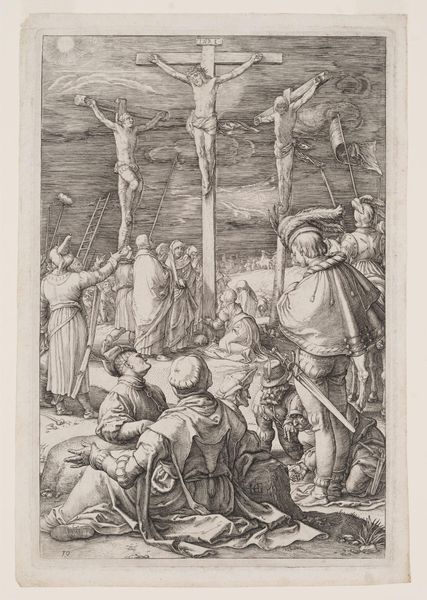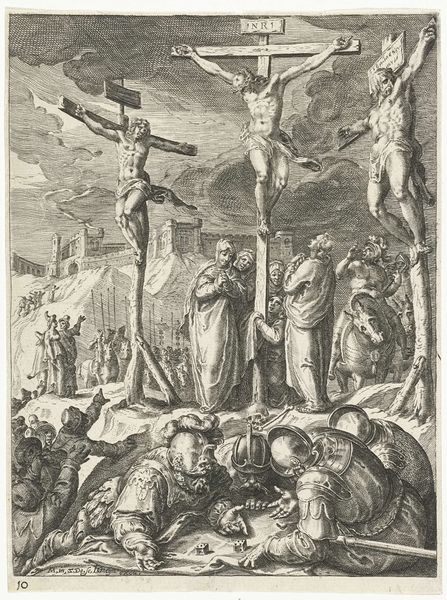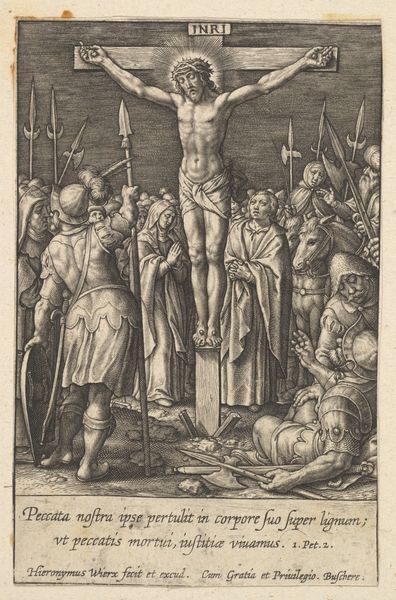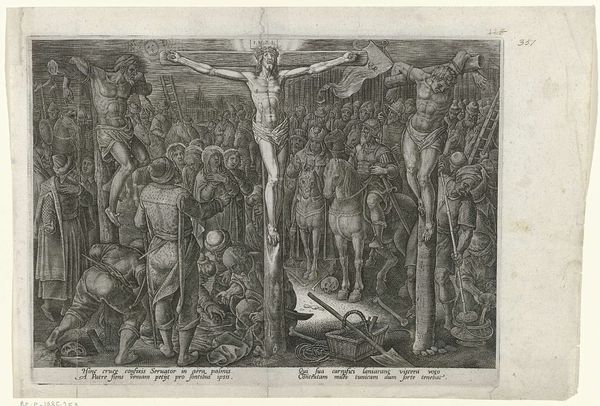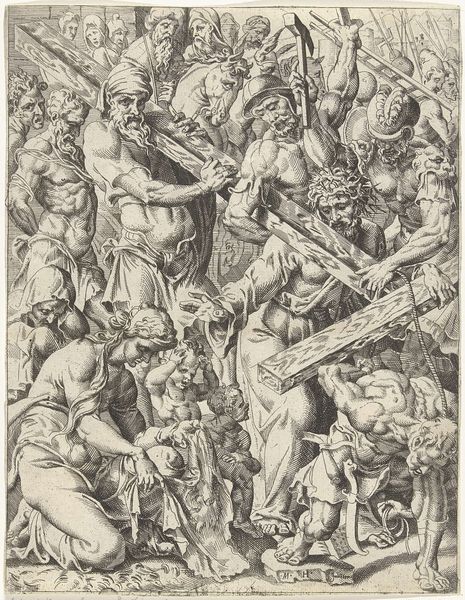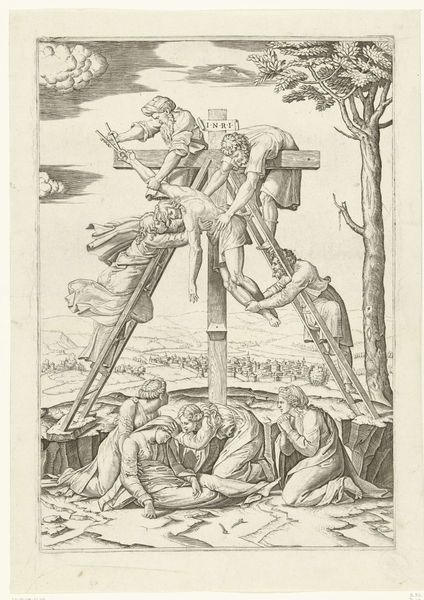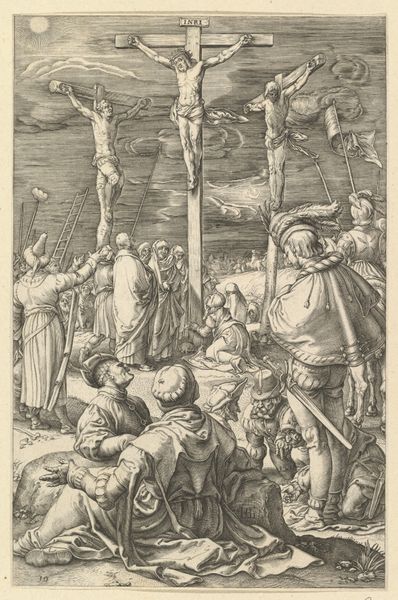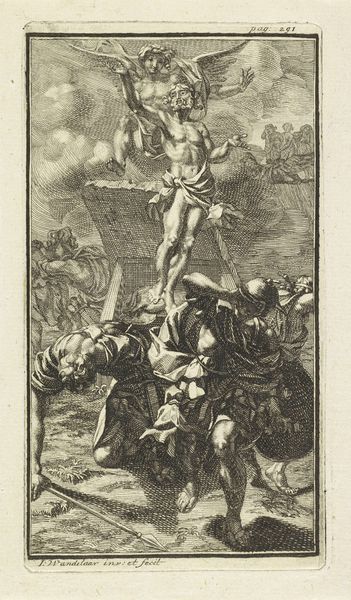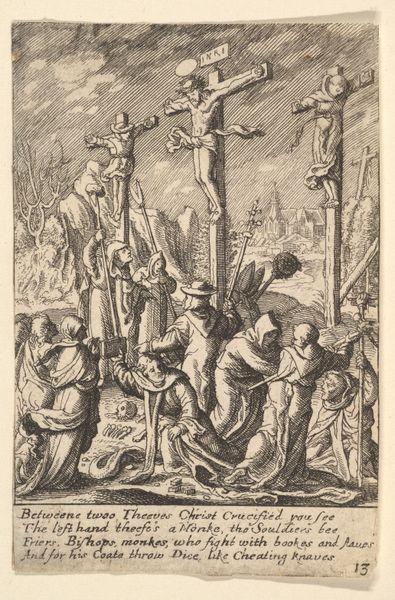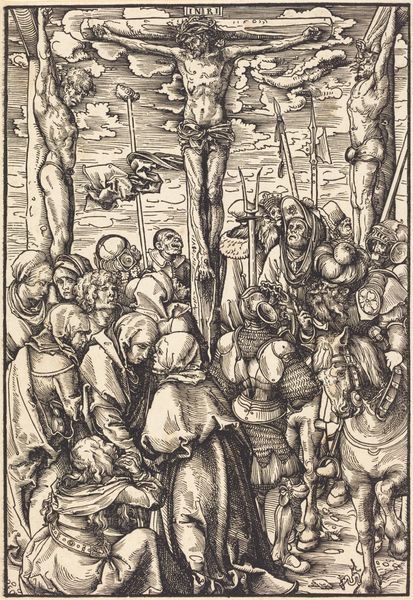
print, pen, engraving
#
narrative-art
#
pen drawing
# print
#
figuration
#
11_renaissance
#
line
#
pen work
#
pen
#
history-painting
#
northern-renaissance
#
academic-art
#
engraving
Dimensions: height 502 mm, width 386 mm
Copyright: Rijks Museum: Open Domain
Curator: This intricate engraving, dating from sometime between 1549 and 1580, is entitled "Kruisiging van Christus," or "Crucifixion of Christ." It's attributed to Jacob Bos. Editor: It’s visually arresting, though unsettling. The scene is teeming with figures, and the linear quality gives everything a sense of heightened tension. It really underscores the drama. Curator: The image clearly operates within the artistic traditions of the Northern Renaissance, a period deeply entwined with religious and political upheavals. Jacob Bos was working within a cultural context grappling with shifting religious authority and reformation. Prints such as this were extremely important, since they were widely circulated, influencing public opinion on a mass scale. Editor: Absolutely. I can't help but see the power dynamics so explicitly rendered here. Christ, positioned centrally, becomes a potent symbol of resistance against both religious and secular institutions. The surrounding figures aren’t passive onlookers, either. Some are grieving, while others appear to be jeering—a fascinating cross-section of responses to power and martyrdom. What do you think the placement of the other two crucified criminals symbolizes? Curator: Placing them on either side emphasizes the stark contrast between the suffering of Christ, positioned as a figure of righteousness, versus those deemed criminal or transgressive by the dominant societal structures. These two other figures aren't granted nearly as much expressive depth. Editor: The female figures huddled at the base of the cross also strike me. Their presence feels significant, highlighting perhaps, the particular suffering and vulnerability of women within such a patriarchal power structure. What do you think Bos might be saying about this inherent inequality? Curator: Indeed. And in some interpretations, Mary, the mother of Jesus, is portrayed with almost as much dignity as Jesus himself. Remember that Marian devotion was a core component of popular religious belief at this time. It's such a layered artwork; both disturbing and strangely beautiful. Editor: Absolutely, I am left pondering the enduring relevance of its themes around power, suffering, and the role of collective trauma in shaping our cultures and societal institutions.
Comments
No comments
Be the first to comment and join the conversation on the ultimate creative platform.

